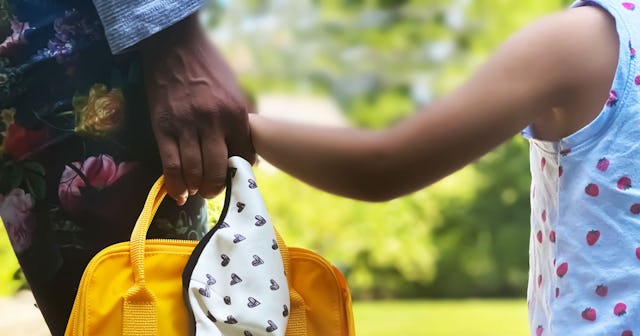Some School Districts Have Opted Out Of Student Quarantines

The news comes as more parents urge for a return to face-to-face learning
As the global pandemic passes the one-year mark, conversations about quarantining and social distancing in schools have become more pointed. Many parents question current protocols, especially as more and more Americans have received the COVID vaccine. The conversation surrounding schooling has never been murkier: who should quarantine, and when?
Donna St. George of The Washington Post reports the state of Ohio has revised its rules regarding students and quarantines.
The state recently announced quarantines are no longer mandatory for possible classroom exposures as long as students were masked and other public health measures were met.
“Teachers and principals and parents were very happy to see the change,” Ohio Gov. Mike DeWine explained in an interview. “Johnny wasn’t sitting out or Sarah wasn’t sitting out for 14 days. They were able to stay in school.”
The media outlet reports the quarantine matter could become more prominent in the fall when counties throughout the nation plan to return to daily in-person instruction, which would surely mean the end of (or at least diminished) physical distancing.
The state checked students and discovered that close contacts who were appropriately masked had percentages of COVID-19 that were on par with those with no known school exposure.
The state’s school policies contradict the messaging from the Centers for Disease Control and Prevention to isolate people who are categorized as “close contacts” — or people who have been within six feet of an infected person for a duration of at least 15 minutes.
How and when quarantines occur vary. In several places, when students are part of a pod and one person inside the collective tests positive, then everybody in that pod enters quarantine.
The story in the Post uses a math class as an example of cross-contamination. “[If] say, a math class tests positive, it’s often just the closest classmates — within six feet for at least 15 minutes, during a 24-hour period — who are sent home,” St. George writes. “High schools tend to rack up more quarantines because students change classes multiple times in a day — so more people are in close range.”
The potential for the same students to float in and out of quarantine brought criticism from some parents, with one mother in The Washington Post story comparing quarantine to a 14-day suspension for “sitting in the wrong seat.”
The Biden administration has emphasized that protection against the spread of the virus by wearing a mask, social distancing, and quarantining possibly contagious individuals apart from others is crucial. Early guidelines from the CDC recommended a 14-day quarantine, but currently, seven or 10 sequestered days are the standard, when implemented along with testing and other factors.
CDC officials still recommend quarantines as an important part of preventing transmission but recognized “some promising results” in studies from Missouri and Utah, where quarantine rules in schools were modified this school year, says the Post. However, the agency stressed that the studies were “insufficient for CDC to substantially change guidance.”